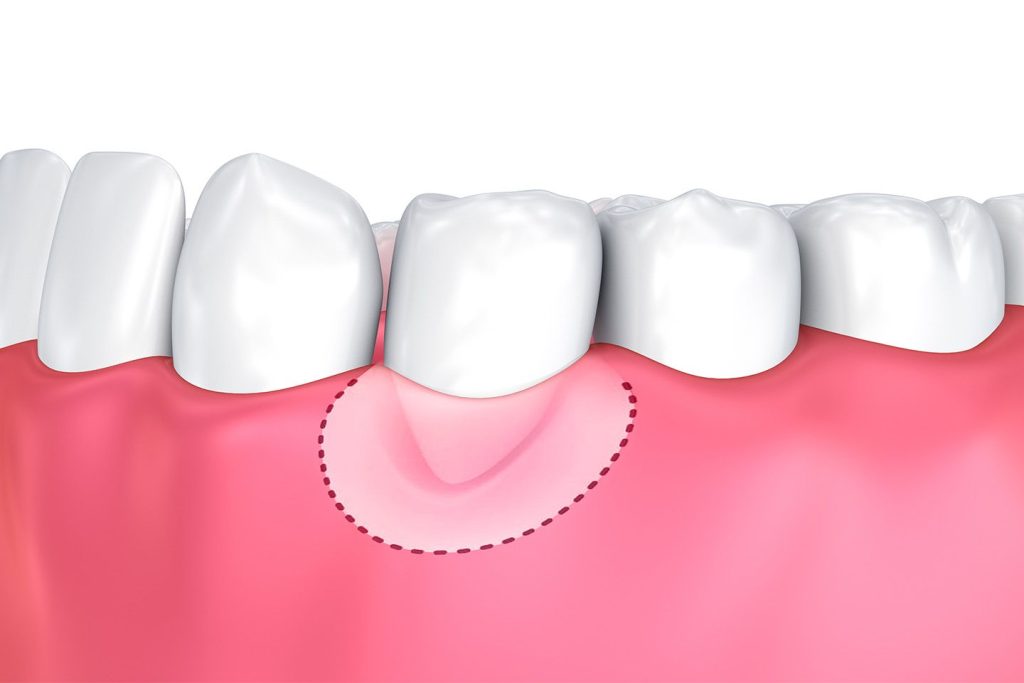Gum recession can occur for a number of reasons, including aggressive brushing, periodontal disease, teeth grinding, genetics, and more. No matter what the cause, it is important to correct gum recession to prevent further issues from developing. Soft tissue grafting, available at Fort Bend Dental‘s offices in Richmond, Rosenberg Missouri City, Aliana and Sugar Land, TX, can add gum tissue to receding gums, protecting the roots of your teeth from exposure and the development of gum disease and tooth decay.

Gum grafting can replace lost tissue to protect the health of your smile.
Am I a Candidate for Soft Tissue Grafting?
Individuals who have suffered gum recession are eligible for soft tissue grafting. Patients considering this procedure should otherwise be in good oral health. Gum disease will need to be resolved or controlled before undergoing gum grafting. A soft tissue graft may be necessary if you experience:
- Exposed teeth roots
- Loose teeth
- Extreme sensitivity to hot and cold foods
- Red, swollen, or bleeding gums
Occasionally, gum recession can develop without any obvious warning signs or symptoms. For this reason, we recommend attending routine dental examinations so your doctor can monitor your oral health.
Types of Soft Tissue Grafts
Gum grafting involves harvesting tissue from one area of the mouth and using it to replace recessed gum tissue. There are three primary types of gum grafts:
- Connective tissue grafts: During this procedure, your surgeon creates a small incision on the roof of the mouth. Underlying tissue is taken from the site and then transplanted to the area of recession. The graft will be secured, and all incisions will be closed with surgical stitches.
- Pedicle grafts: Patients who have substantial gum tissue available can benefit from a pedicle graft. During this procedure, the donor graft is harvested from neighboring gum tissue rather than the roof of the mouth. First, a flap incision is created. Next, the flap is positioned over the affected tooth root and sutured into place.
- Gingival grafts: Similar to a connective tissue graft, a free gingival graft involves harvesting tissue from the roof of the mouth. However, rather than taking the underlying tissue, the graft is taken from the top layer of the palate. This method provides the best coverage for patients with thinning gums.
The method recommended for you will depend on your unique needs and the amount of recession you are experiencing. During an initial consultation at our office, we can help you determine a personalized treatment plan.
Occasionally, gum recession can develop without any obvious warning signs or symptoms. For this reason, we recommend attending routine dental examinations so your doctor can monitor your oral health.
Healing and Recovery
Gum grafting is considered oral surgery. Therefore, it is normal for patients to experience some degree of discomfort following the procedure. However, this can be controlled with prescription medications and over-the-counter pain relievers. Swelling and bruising may also occur. These side effects should diminish over the first few days.
During the initial healing phase, patients should avoid brushing and flossing the surgical site. To keep the area clean, an antibacterial mouthwash can be used. It is also a good idea to stick to soft foods until your gums heal. Examples include fish, yogurt, pasta, smoothies, pudding, and applesauce.
Contact Us for More Information
If you are experiencing gum recession, a soft tissue graft can restore your oral health. To learn more about your treatment options, schedule a consultation at our practice. You can call our office nearest you or contact us online anytime.

